Save the Ohio Native Bees and Bumblebee Species
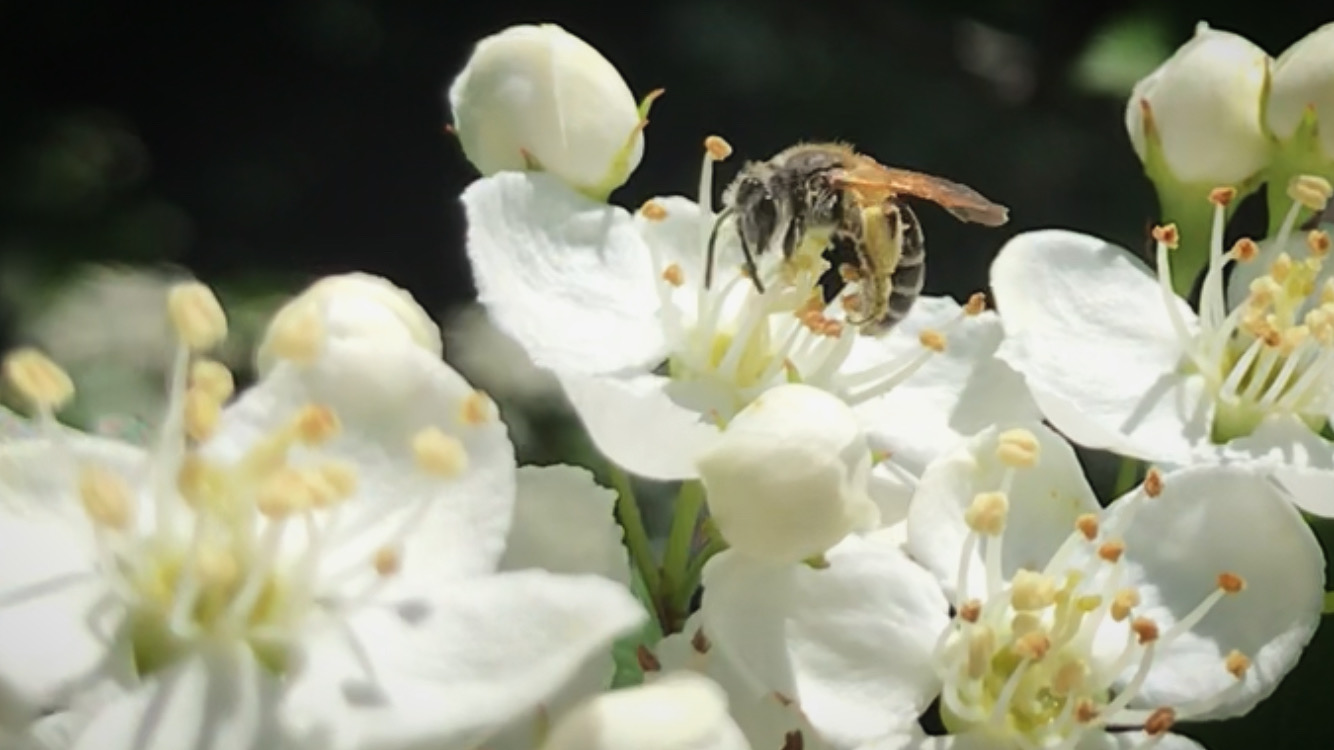
To save my Ohio native bees, insects and birds, I removed almost all non-native shrubs and flowers from yard. I then doubled the amount of native plants. trees and shrubs with a mixture of heirloom annual flowers. This led to a substantial increase the numbers of bees and other invertebrates visiting. Miraculously, new species started coming to my tiny city lot.
We need millions of small space gardens and wildflower patches. The need to Re-Wild and ditch the 'lawn' is critical stop pollinator extinction.
Leave the leaves on the ground!
Queen Bumblebees emerge in early spring to search for nesting places. Due to prairie loss, the plethora food source of wildflowers are gone. Queens forced to fly further to find nesting spots and they are starving due to lack of food to support such flights.
Gentle solitary bees that nest in the ground are suffering because of lawn chemicals being used and homeowners who are exterminating these bees just because they don't won't "bee holes" making their lawns ugly.
Fall leaves are important nest material for bees--- and moth's who roll up in them for the winter. Removing the dead leaves that fall during fall is a major cause of decline in pollinators and other invertebrates. Bees and other insects are dying for human "aesthetics," which i find mind boggling!
Re-wind, Re-wild, Re-wild
Those "perfect lawns" free of weeds and leaf debris are the grave yards for pollinators. Please leave those leave and "weeds" like hen bit, and dandelions for the bees. Re-Wilding is technically letting things go back to the way nature intended by letting native plants grow without human hands creating a space. Obviously, that can't be done in some areas and most homeowners won't go full re-wilding. If you can just completely forego a lawn-- please re-wild even the smallest spots in your yard. Plant native plants in a small corner and leave the leaves --that counts. That helps. Just.do.something
Re-Wilding Native Plants Provide 3 Essentials for Pollinators
Nectar Plants
Adult insects survive on nectar, not pollen. Nectar plants will keep the adults coming to lay eggs & nest.
Host Plants
These extremely important lifecycle plants, trees, and/or shrubs are the food source for caterpillars.
Pollen Plants
Pollen supports young life-the food source baby bees or adult spiders, beetles, and other insects.
Learn To Identify Your Native Bees
Once you start planting native plants, you'll have more bee species than you're used to seeing visit. Many people only identify bees as black and yellow. We have many native bee species and those go unnoticed and many of them are all black, like the Two-Spotted Longhorn bee, and some are grey, like Leaf-cutters, some are blue like Mason bees.
Have your Iphone ready to take pictures so you can learn to id your new visitors! I've share a few bees picture below to hopefully share a few that you may not be used to seeing. There's also some tips as to how to take pictures to properly ID a bumblebees and others.
Take a Faceshot
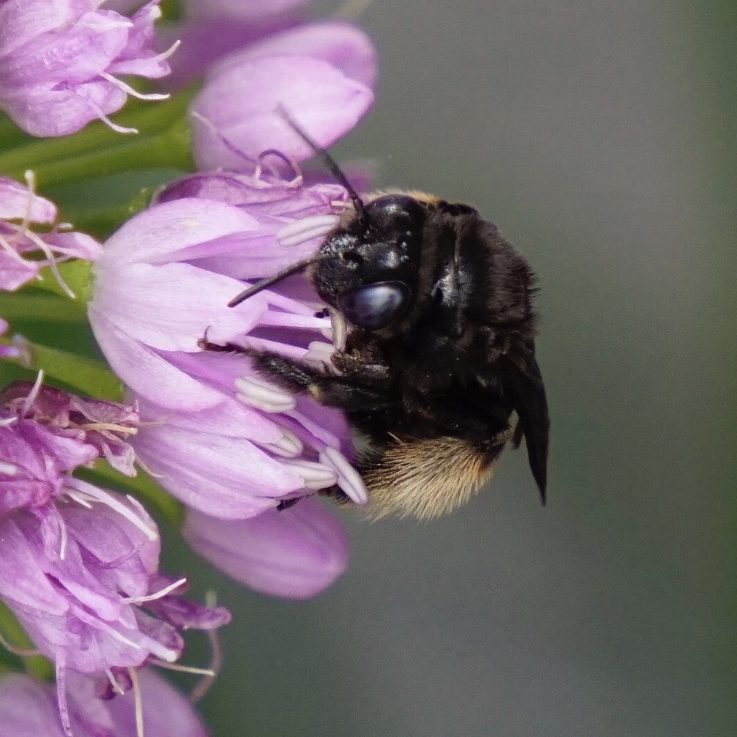
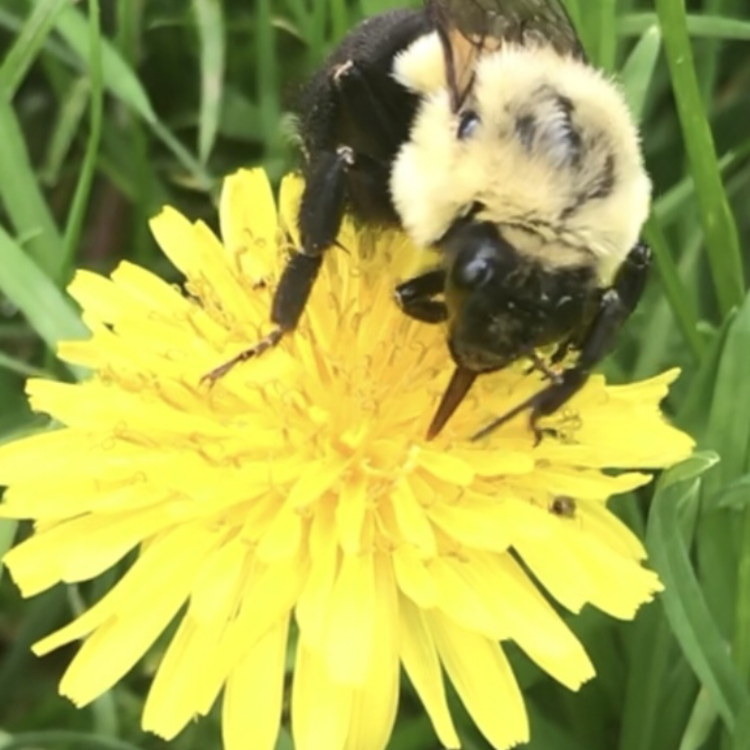
Take a Leg & Back Shot
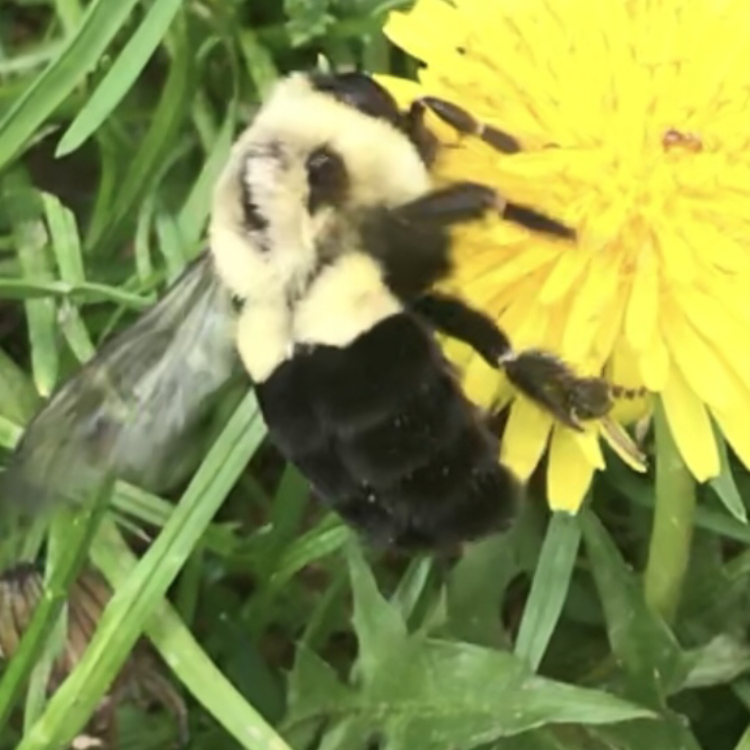
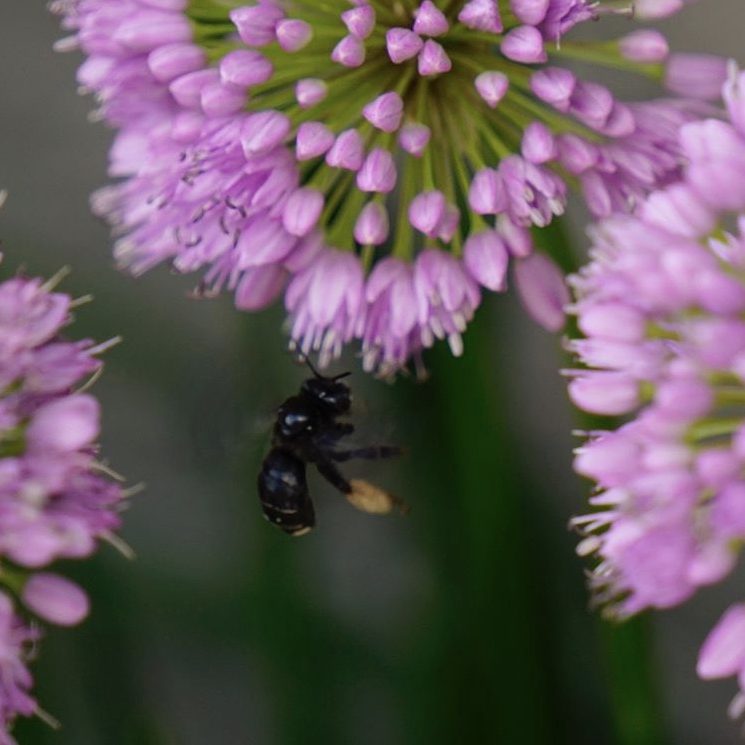
Ohio Native Bees
The Leafcutter
There are thousands of species of Leafcutter Bees and they are difficult to ID from photos.
These bees are the bees that shave off the edges of your flower petals and leaves. They use plants for nesting materials. I love the soft grey white hairs of this species.
These bees have always been docile toward me. They are second only to the Wool Carder bee when it comes attacking other bees to keep them off of their food sources. The leaf cutter in these pictures, repeated slammed into and knocked from the flower the honeybee, as well as the other grey bee of which species and sex I am unclear.
I think this is a Pugnacious Leafcutter Bee.
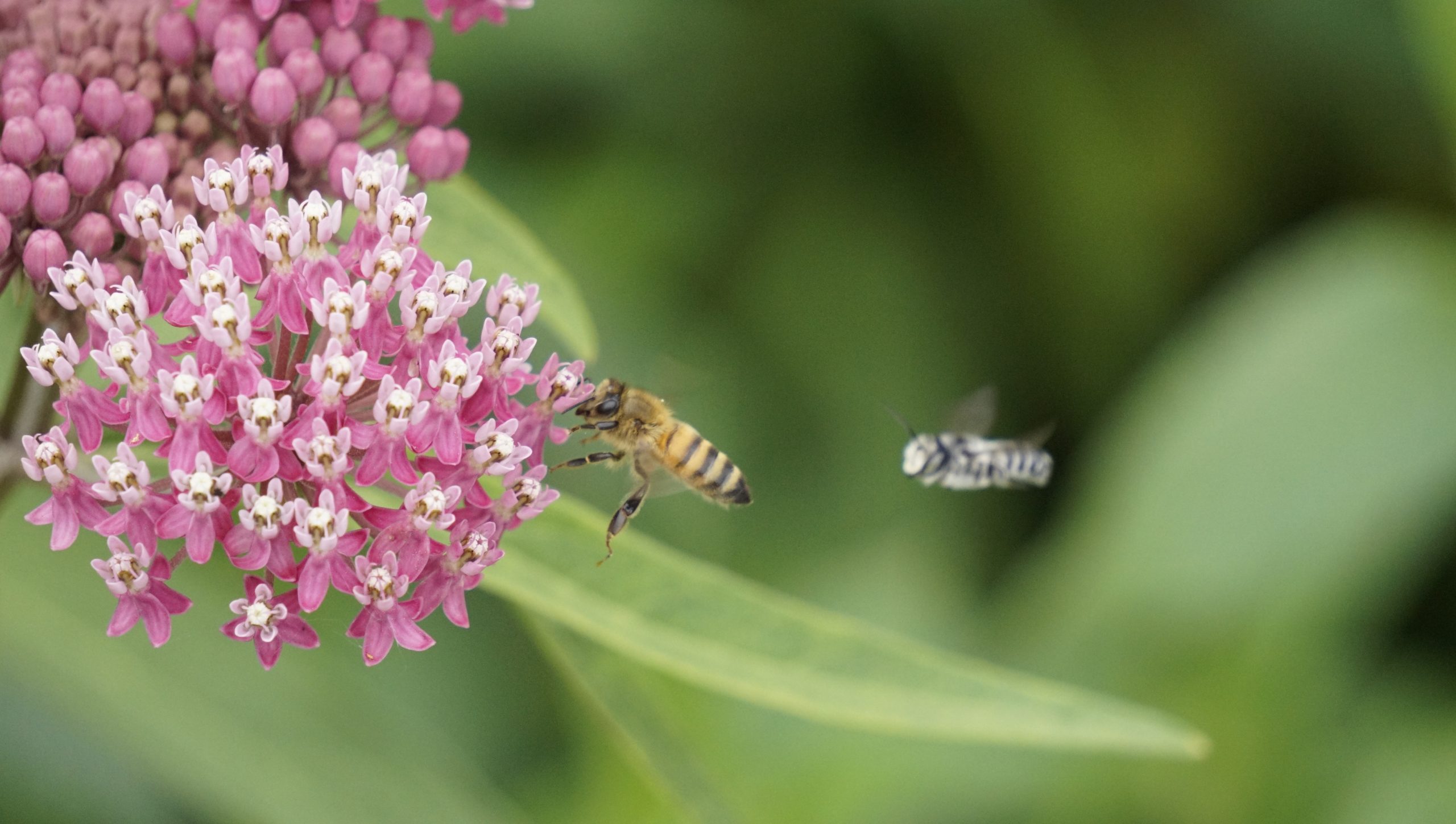
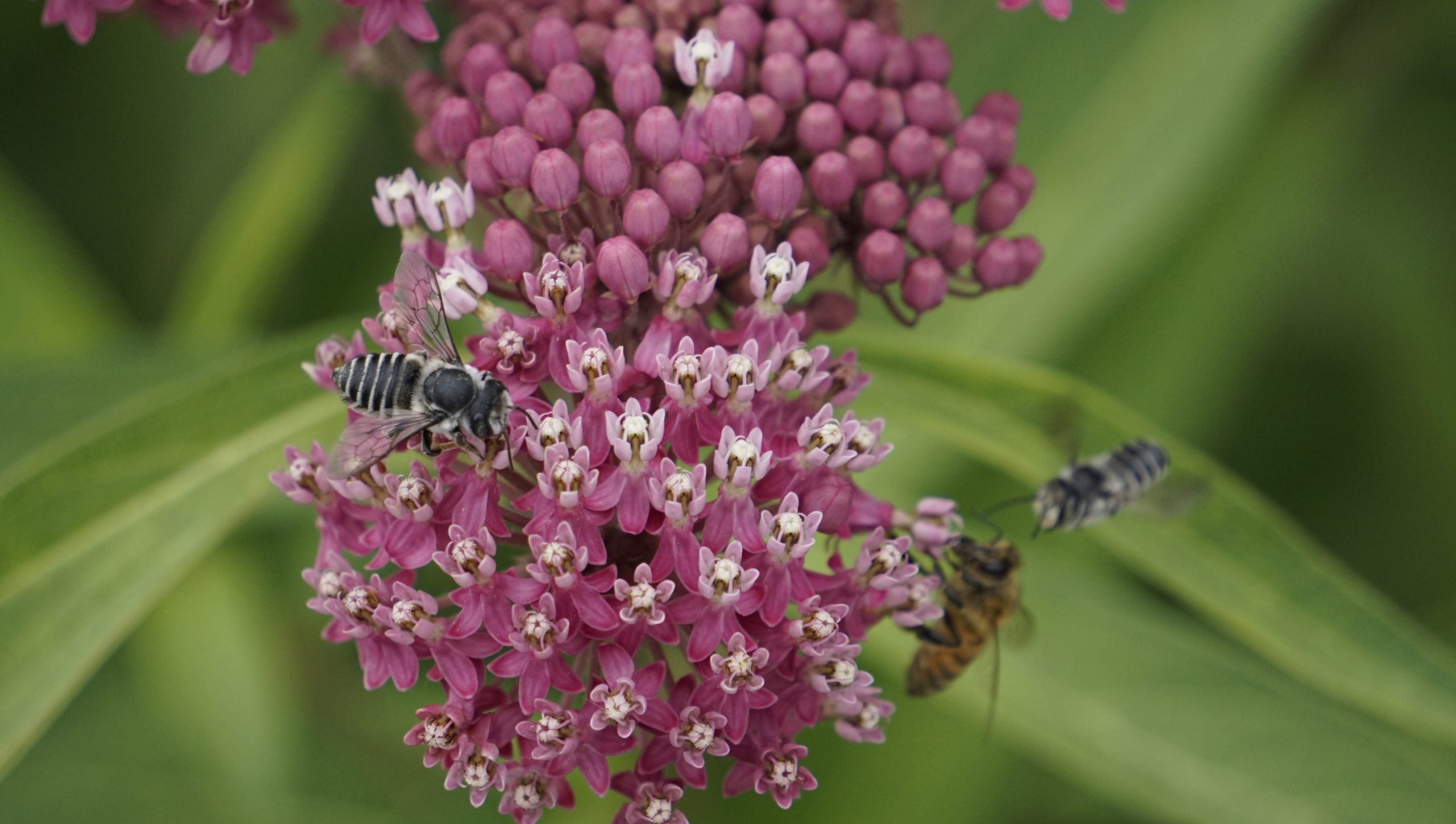
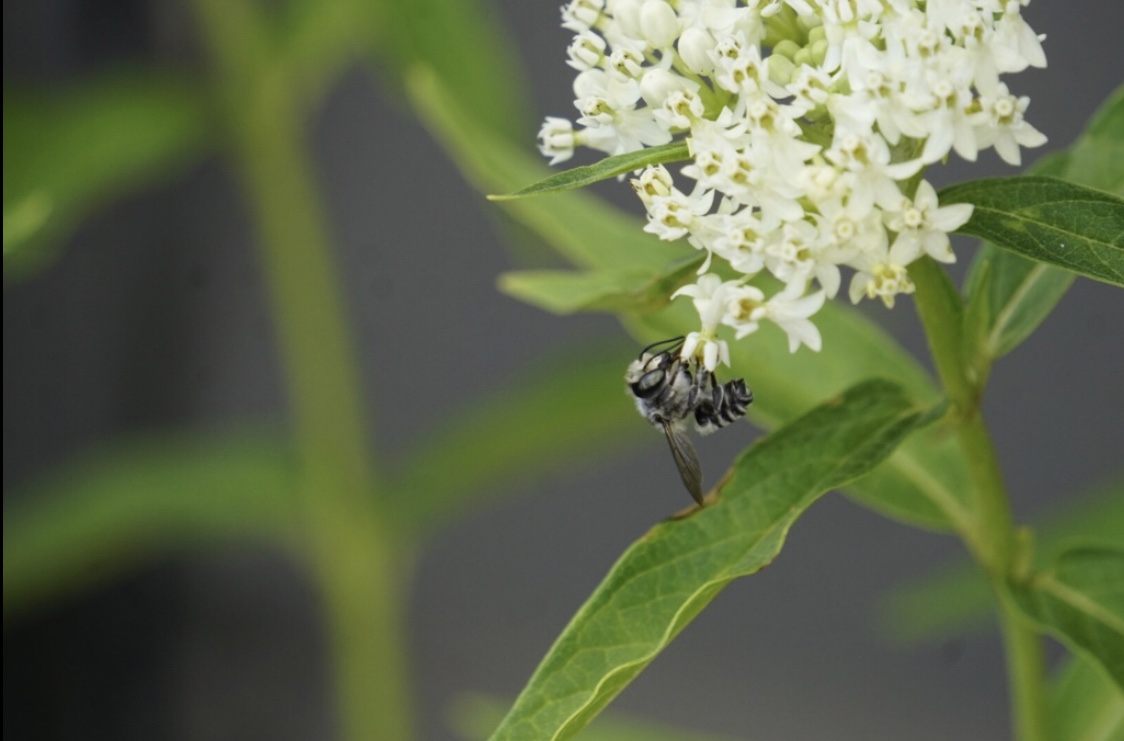
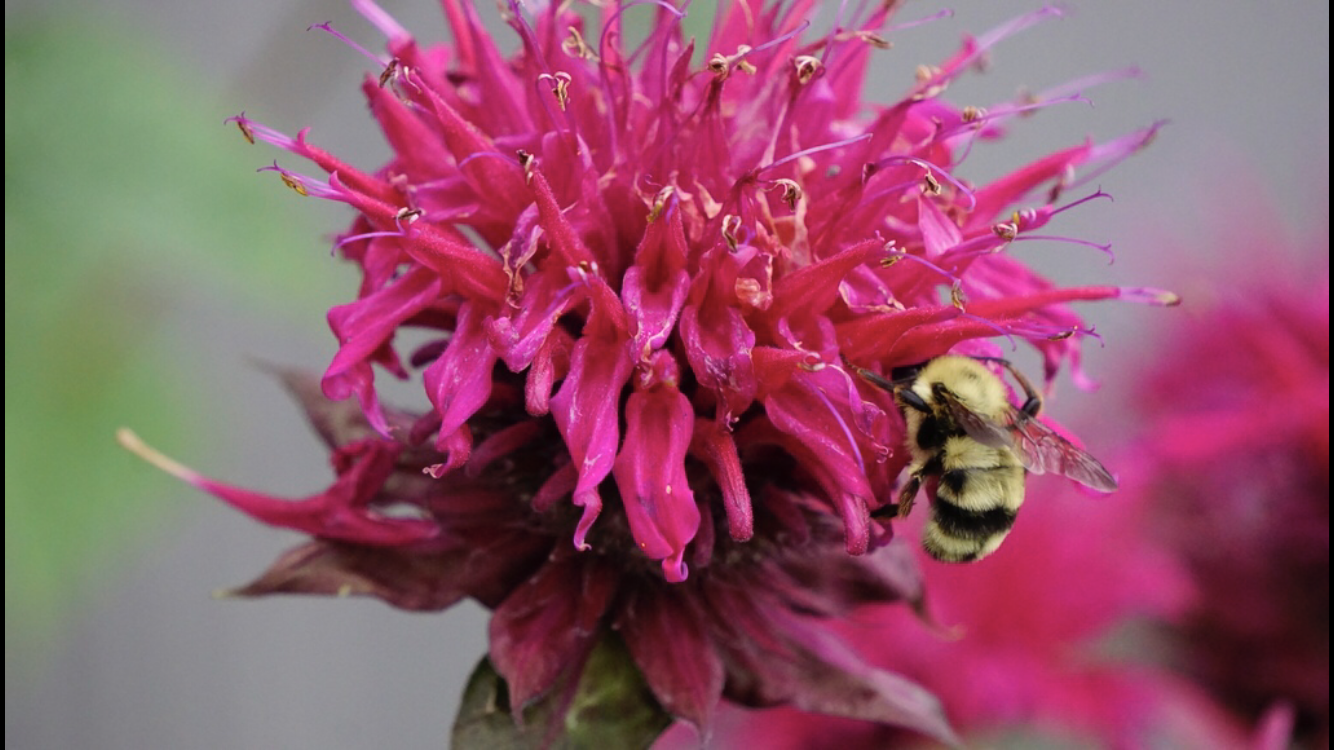
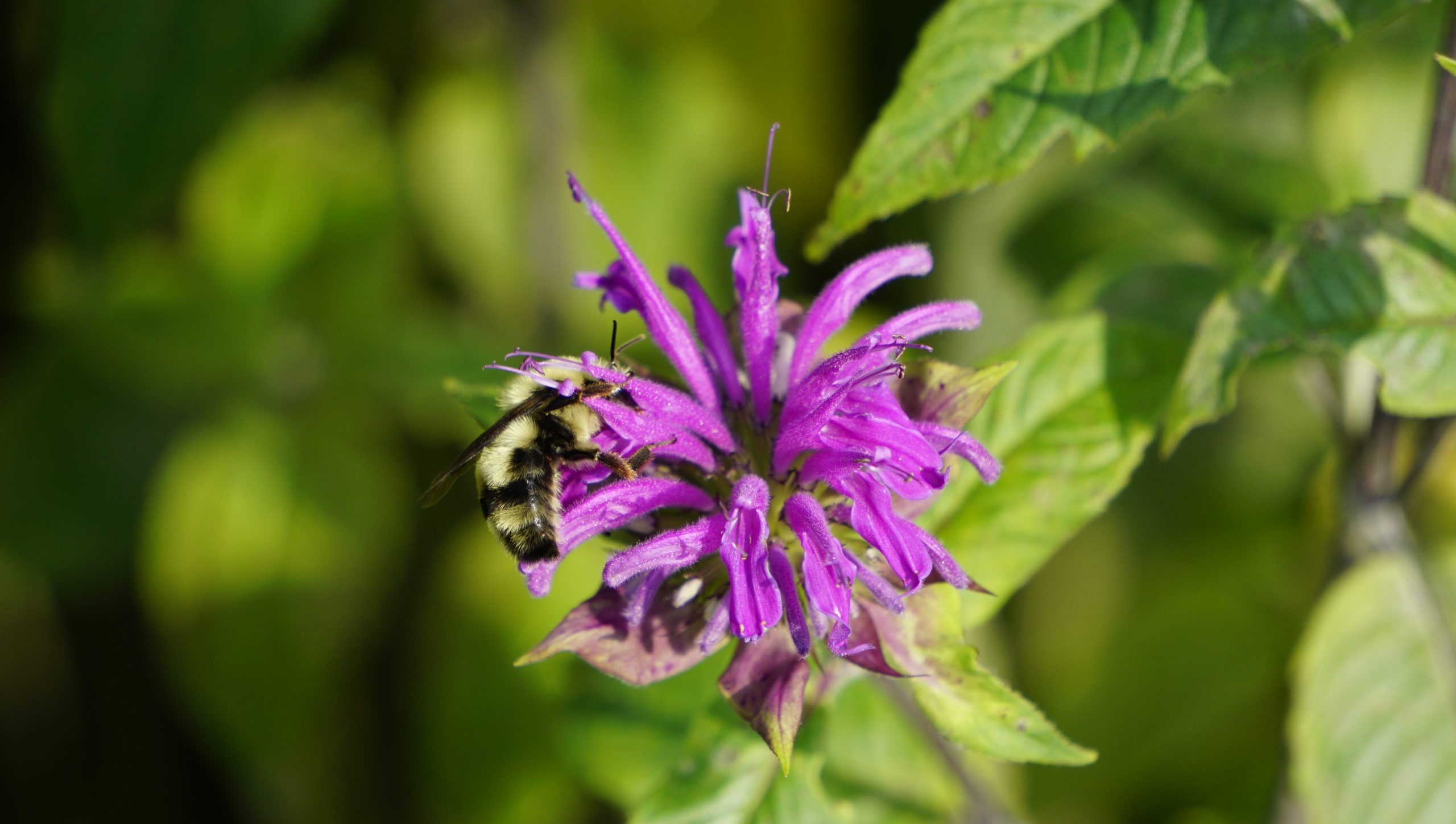
The Male Two-Spotted Bumblebee
This Bee caused me quite a bit of grief to identify! It took quite some time for me to find the bee online. I was so excited when I first saw it because I thought I had a new species that showed up! However, I was wrong! It's the male Two-spotted Bumblebee and it looks very different from the female below.
It's a lovely bumblebee. The pattern on it makes it stand out in the garden. It appears as though the males show up on late summer to early fall after they are kicked out the nests. They show up in groups, i rarely see just one in the flower beds.
The Female Two-Spotted Bumblebee
This is the female bee of the bumblebee listed above. Plentiful throughout the garden all summer- they are a bee with which most of your are familiar.
The queens emerge around early spring- which is the end of March to April. The queens are quite large in size and feast upon my Blue False Indigo, and blueberry bushes while establishing their nests. They will nest under fruit shrubs if you leave the grass standing taller.
Later, workers bees feast upon almost everything that I have in the yard with Bee Balm (pictured) and native Obedient plant being among their favorites.
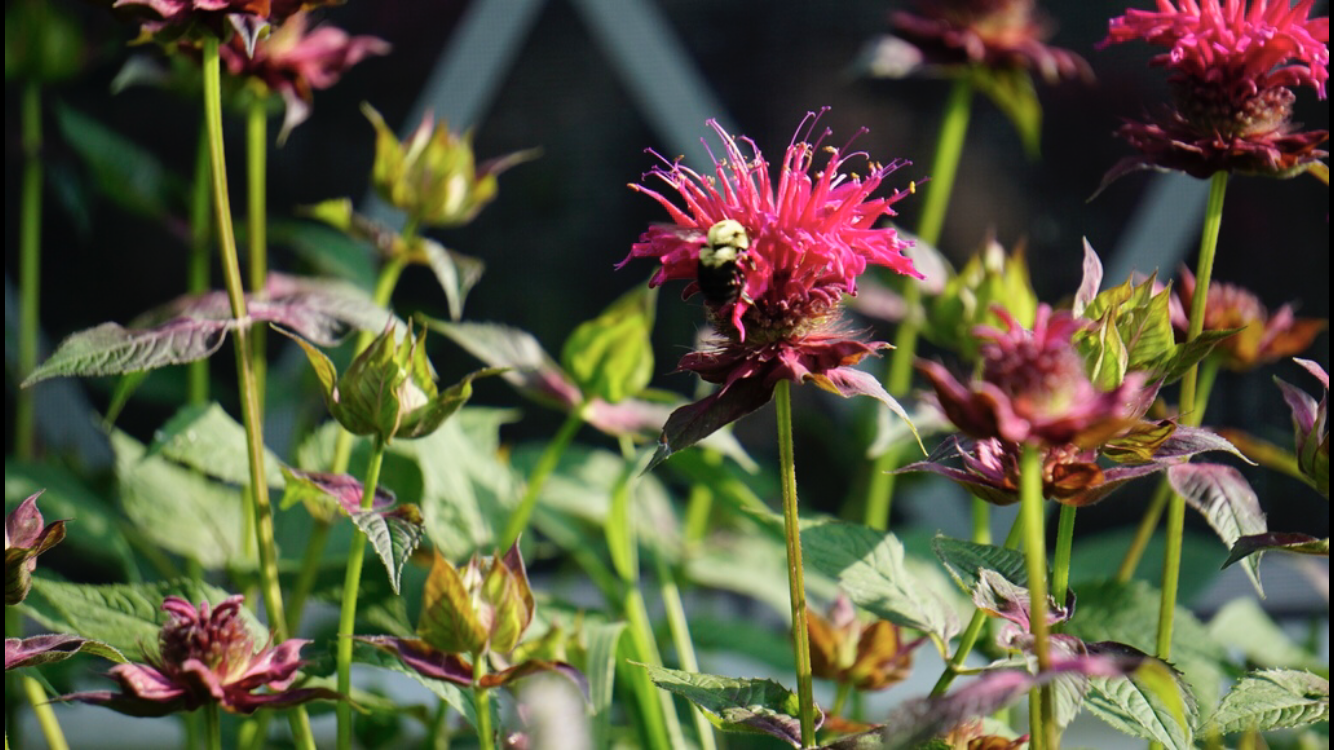
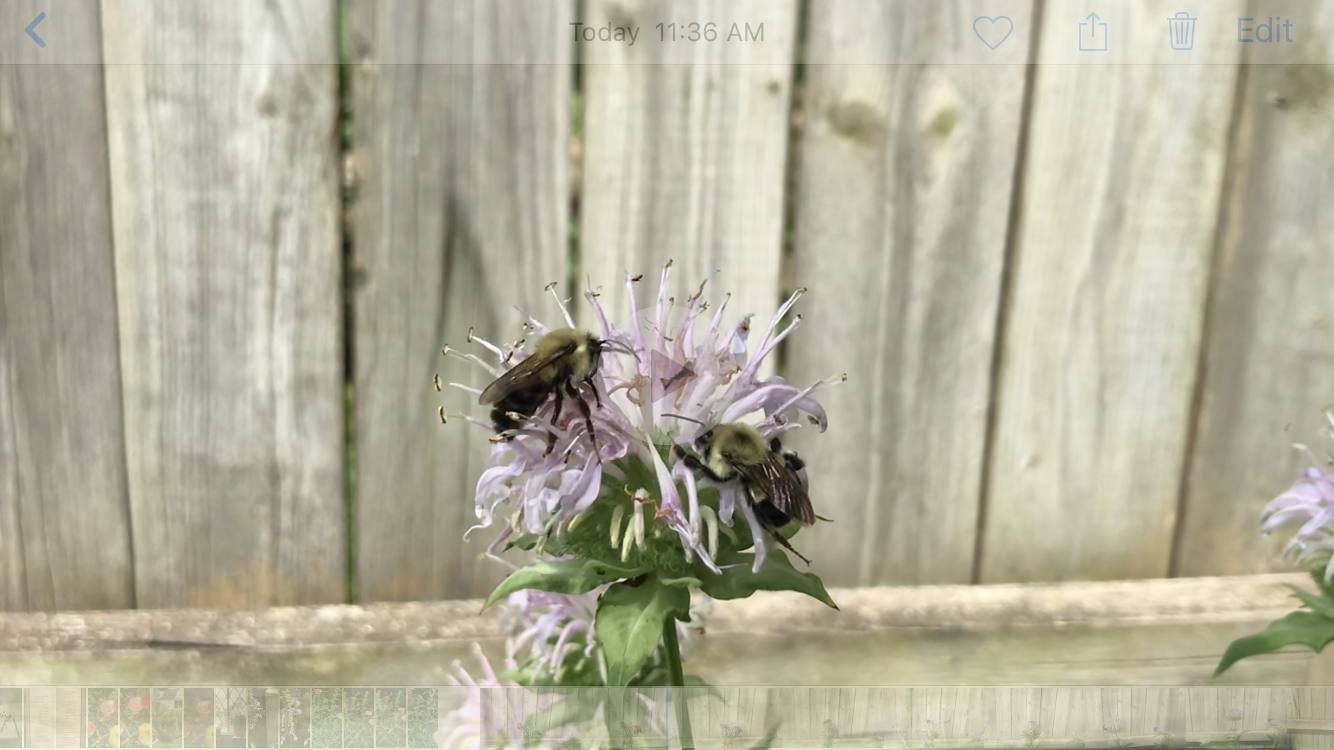
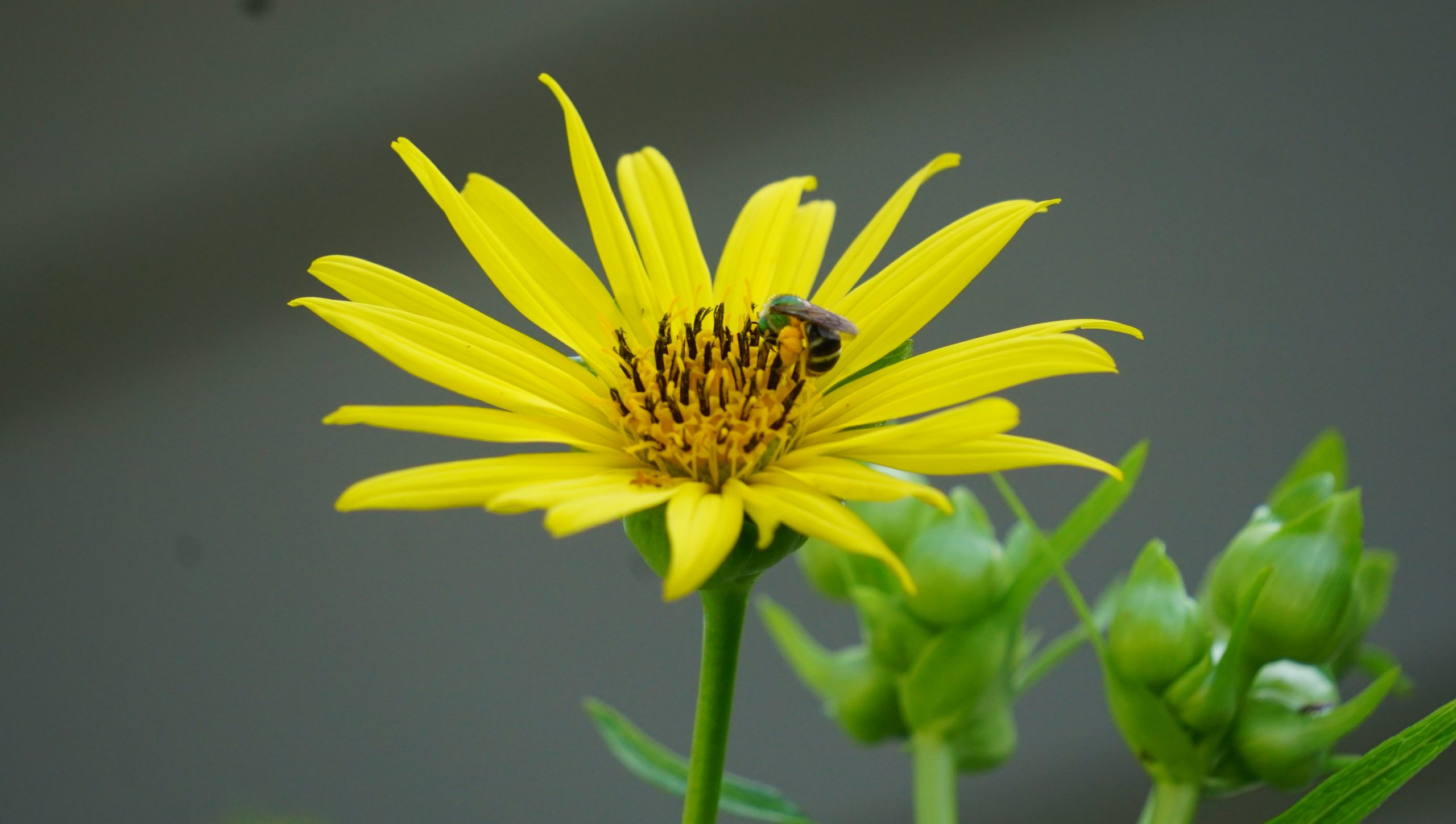
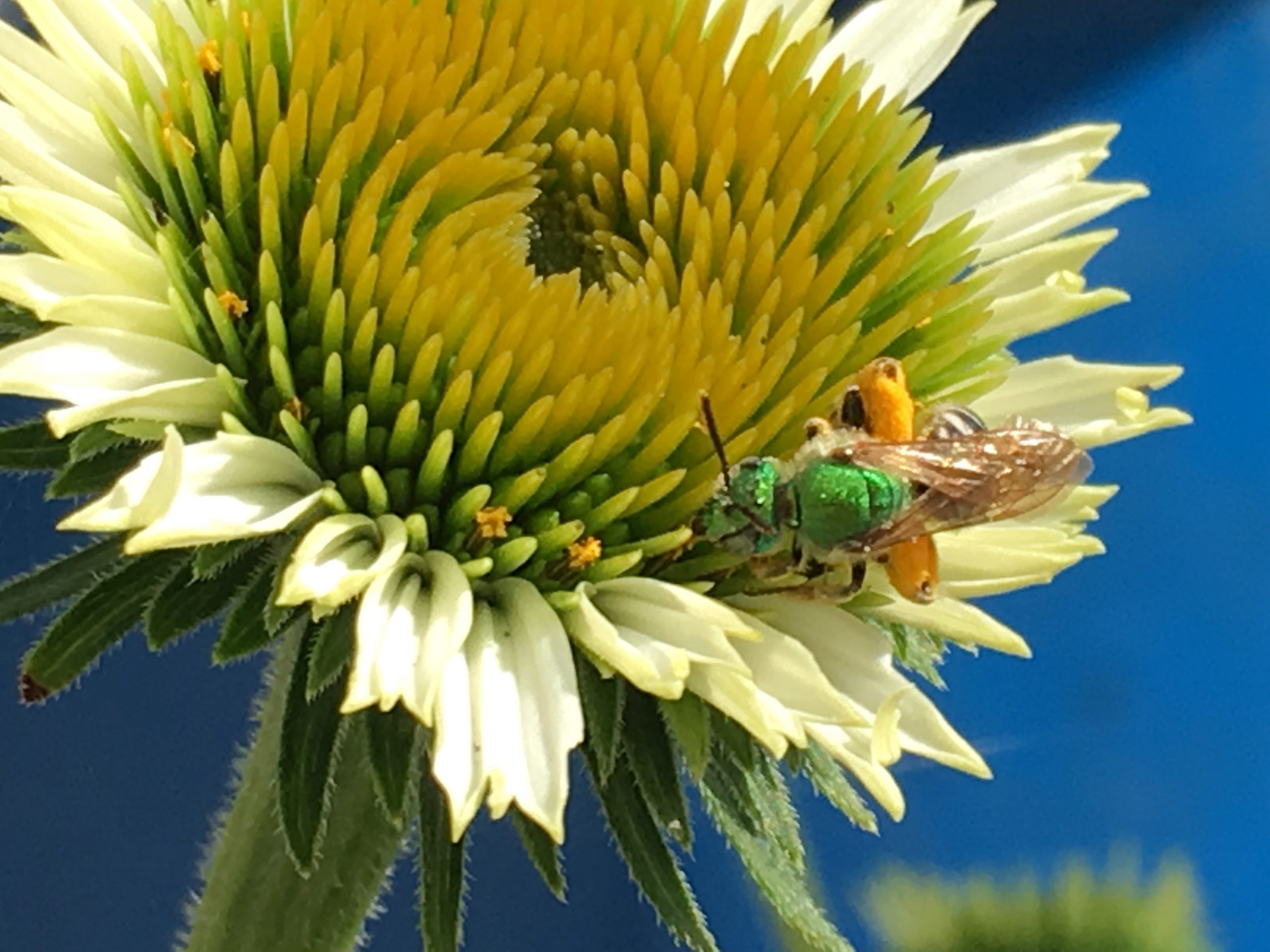
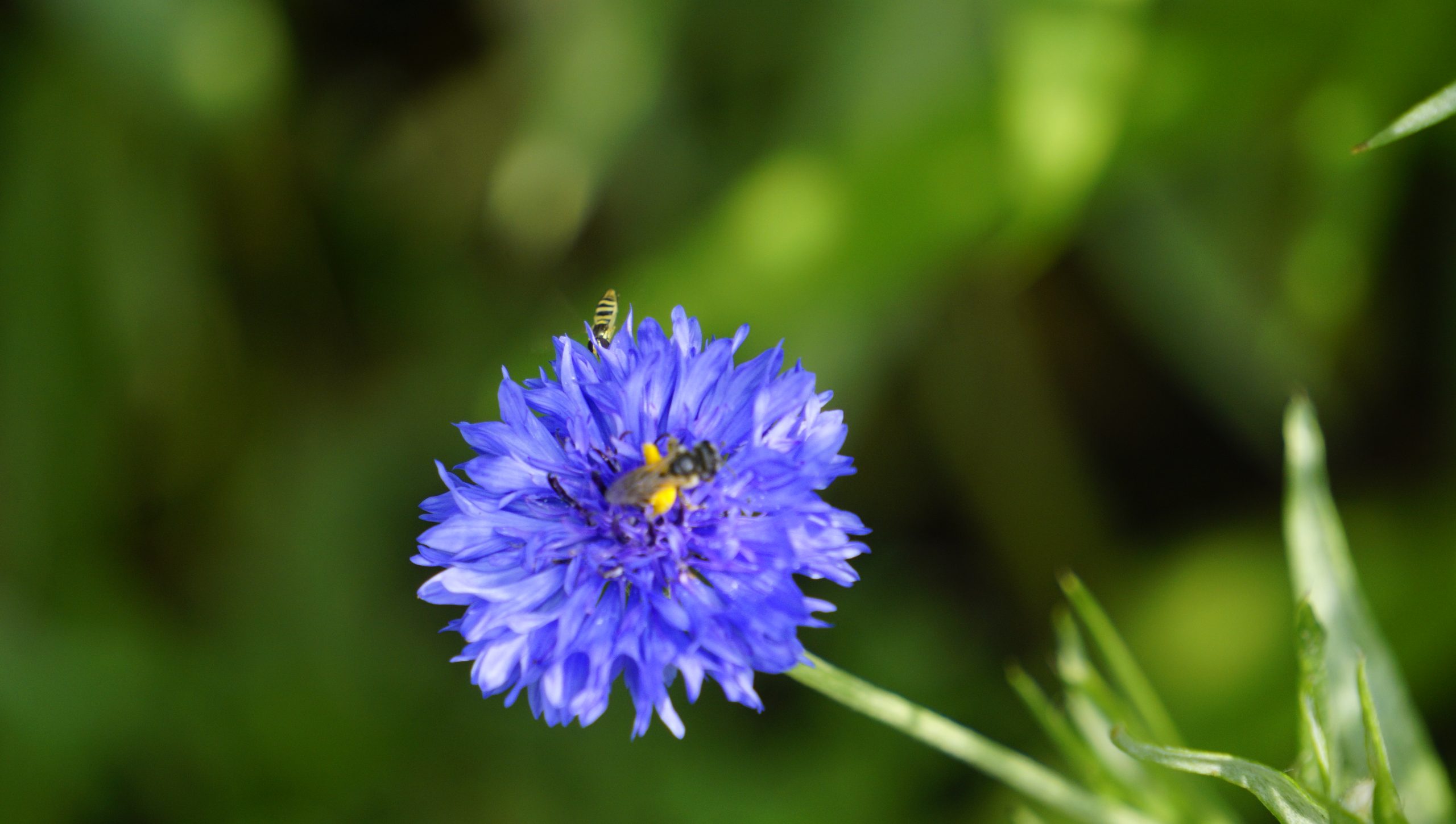
The Sweat Bee
A highly important pollinator, this bee pollinates all kinds of plants and crops. I think this is a female bi-colored bee based upon the white stripes.
There are hundreds of species of this bee and they vary in color from light metallic green, to a super dark green. They are docile, and true to their name, on a hot day working in the beds, they do like to taste my sweat! I don't mind these getting the protein that they need from my sweat!
I have thousands of these bees in my yard--of varying species. These bees love the native Cupplant, Coneflower, and annual Bachelor Button Flowers.